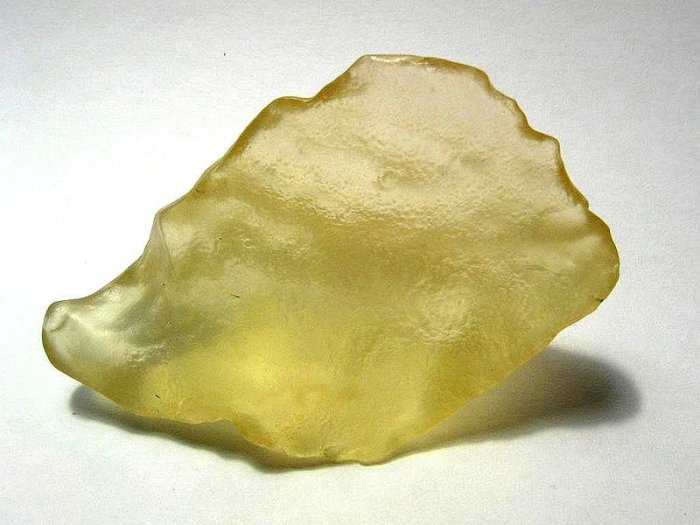King Tut’s Cosmic Scarab Brooch And Dagger Linked To Meteorite’s Crash 28 Million Years Ago
Jan Bartek - AncientPages.com - One can never get tired of admiring exquisite jewelry and other beautiful artifacts produced by ancient civilizations that were so artistic and creative. Some of these ancient artifacts are truly unique because they were made with material of extraterrestrial origin.
Ancient Egyptian pharaoh Tutankhamun, commonly referred to as King Tut, had several cosmic jewels placed in his tomb when he died, being only 18 years.
Left: King Tut's burial mask. Credit: Mark Fischer - CC BY-SA 2.0 - Middle: King Tut's Scarab Brooch. Credit: J. Bodsworth Public Domain - King Tut's Dagger. Credit: Daniela Comelli/Polytechnic University of Milan
When Egyptologist Howard Carter and his team found steps that led to Tutankhamun's tomb in the Valley of the Kings, on November 4, 1922, they were startled to see all the extraordinary treasures in his burial. At the time, the scientists had no idea some of the artifacts were produced with otherworldly material.
It took many years before researchers could determine some of King Tut's afterlife gifts were formed when a meteorite smashed into the Earth 28 million years ago.
King Tut's Cosmic Scarab Brooch
Carter thought King Tut's breastplate was made of chalcedony, a type of quartz. However, scientists became curious when geographer Patrick Clayton who was exploring in 1932 the Great Sand Sea along the border on modern Egypt and Libya, stumbled upon the mysterious glass in the sand. This yellow-green glass was identical to the gemstone discovered in King Tut's tomb.
Winged scarab of Tutankhamun with semi-precious stones. Credit: Jean-Pierre Dalbéra - Flickr
What was it possible?
The origin of desert glass has long remained a mystery, but scientists have solved the riddle.
Today, scientists know the material known as Libyan Desert Silica Glass was formed about 28 million years ago when a meteorite entered the Earth's atmosphere and exploded over Egypt. This cosmic impact heated the sand beneath it to a temperature of about 2,000 degrees Celsius. 1
As a result of this, desert glass was formed, and this material was later used to create King Tut's scarab brooch.
Libyan desert glass. Credit: H. Raab - CC BY-SA 3.0
King Tutankhamun's magnificent breastplate "is adorned with a rare green desert glass scarab set on the body of a falcon, it symbolizes the sun. The front legs and wings of this composite creature support a celestial boat containing the left eye of Horus – the emblem of the moon – crowned by a silver moon disk with a crescent in gold.
The Pharaoh Tutankhamun is depicted in the disk flanked by the moon god Thoth and by the sun god Ra-Horakhty in a protective pose." 2
The "scarab is one of the oldest and widely used symbols of the ancient Egyptians. Egyptian pharaohs worshipped dung beetles, and most probably, it was symbolically as sacred to the Egyptians as the cross is to Christians.
The scarabs with aesthetic qualities and shamanic symbolism were already known in the Old Kingdom (3rd millennium BC) and played an important role in the early worship of animals. It is supported by archaeological evidence discovered in graves during the time of King Den of Dynasty I." 3
What is still unknown is how desert glass became part of King Tut's breastplate. One possible scenario is someone, perhaps a caravan wandering "through the dunes spotted a glint of light and bent down to pick up a particularly luminous piece of glass, the color of sun shining through a yellow-green leaf. It was small enough to fit in the palm of their hand, but precious enough to be carried some 450 miles to the lush shores of the Nile River, where an ancient Egyptian civilization was flourishing." 4
King Tut's Cosmic Dagger
Equally exciting and beautiful is King Tut's dagger that was buried alongside the young Pharaoh.
"Researchers at the Egyptian Museum in Cairo, Milan Polytechnic, and Pisa University used x-ray scanning technology to examine the composition of the metal. They found the remarkably well-preserved blade, which had suffered little corrosion while buried with its owner, contained high levels of nickel, along with traces of cobalt and phosphorus.
King Tut's dagger. Credit: Grand Egyptian Museum
They were able to match the chemical composition of the blade to a meteorite named Kharga, which was found in 2000 on the Maras Matruh plateau in Egypt, 150 miles west of Alexandria.
The dagger is considered one of the most outstanding items to have been retrieved from Tutankhamun's tomb due to the fine metal work.
King Tut's tomb also contained other objects with a link to the cosmos." 5
All these magnificent burial gifts were placed in the young King Tutankhamun's tomb to make the journey to the afterlife easier.
Updated on January 27, 2024
Written by Jan Bartek - AncientPages.com Staff Writer
Copyright © AncientPages.com All rights reserved. This material may not be published, broadcast, rewritten or redistributed in whole or part without the express written permission of AncientPages.com
Expand for references- Aaron J. Cavosie; Christian Koeberl - Overestimation of threat from 100 Mt–class airbursts? High-pressure evidence from zircon in Libyan Desert Glass, Geology, Volume 47, No. 7, 2019
- Grand Egyptian Museum - Pectoral with a winged scarab from King Tutankhamun's collection
- Sutherland - Secrets Of The Scarab – Ancient Sacred Symbol In Human History, AncientPages.com
- Sebastian Bouknight - How an Ancient Meteorite Adorned King Tut's Jewelry, Inside Arabia
- Conny Waters - Tutankhamun Had An Ancient Dagger From Outer Space, AncientPages.com
More From Ancient Pages
-
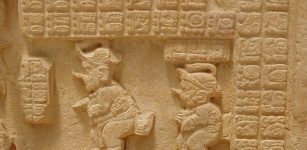 Alux: Little Mythical Troublemaker And Guardian Of Corn Fields In Mayan Folklore
Featured Stories | Jun 11, 2019
Alux: Little Mythical Troublemaker And Guardian Of Corn Fields In Mayan Folklore
Featured Stories | Jun 11, 2019 -
 Mysterious Jawbone May Represent Earliest Presence Of Humans In Europe
Archaeology | Dec 7, 2022
Mysterious Jawbone May Represent Earliest Presence Of Humans In Europe
Archaeology | Dec 7, 2022 -
 What Can Archaeology Tells Us About Climate Change?
Archaeology | Aug 9, 2021
What Can Archaeology Tells Us About Climate Change?
Archaeology | Aug 9, 2021 -
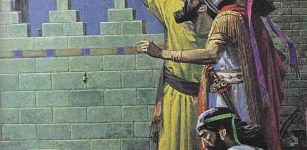 Babylonian Astronomers Used Geometry To Track Jupiter – 1,400 Years Before Europeans
Archaeology | Jan 28, 2016
Babylonian Astronomers Used Geometry To Track Jupiter – 1,400 Years Before Europeans
Archaeology | Jan 28, 2016 -
 Dendra Armor – 3,500-Year-Old Mycenae Armor Was Suitable For Extended Combat
Archaeology | May 22, 2024
Dendra Armor – 3,500-Year-Old Mycenae Armor Was Suitable For Extended Combat
Archaeology | May 22, 2024 -
 Secret History Of The Micmac – The Mysterious Red Earth People
Ancient Mysteries | Jun 22, 2020
Secret History Of The Micmac – The Mysterious Red Earth People
Ancient Mysteries | Jun 22, 2020 -
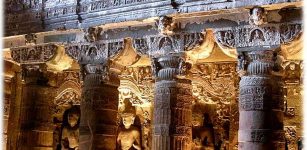 Ajanta Caves: Incredible Accomplishment Of India’s Ancient Stonecutters
Featured Stories | Oct 1, 2015
Ajanta Caves: Incredible Accomplishment Of India’s Ancient Stonecutters
Featured Stories | Oct 1, 2015 -
 Unknown Neanderthal Lineage Discovered In “Thorin” Who Lived 50,000 Years Ago
DNA | Sep 11, 2024
Unknown Neanderthal Lineage Discovered In “Thorin” Who Lived 50,000 Years Ago
DNA | Sep 11, 2024 -
 3D Reconstruction Of ‘Lost Chapel’ Of Westminster Palace
Archaeology | Oct 9, 2017
3D Reconstruction Of ‘Lost Chapel’ Of Westminster Palace
Archaeology | Oct 9, 2017 -
 Previously Unknown Early Christian Church Unearthed In Ancient City Of Artaxata
Archaeology | Oct 18, 2024
Previously Unknown Early Christian Church Unearthed In Ancient City Of Artaxata
Archaeology | Oct 18, 2024 -
 Mysterious And Magnificent Pasha Gardens Built For Unknown Reasons
Featured Stories | Oct 8, 2018
Mysterious And Magnificent Pasha Gardens Built For Unknown Reasons
Featured Stories | Oct 8, 2018 -
 Sacred Artifact With Mystical Powers – The Discovery – Part 2
Ancient Mysteries | Apr 26, 2019
Sacred Artifact With Mystical Powers – The Discovery – Part 2
Ancient Mysteries | Apr 26, 2019 -
 Glooskap (Gluskap): Mythical Hero Who Defeated Evil Sorcerers And Demon Followers
Featured Stories | Jan 25, 2016
Glooskap (Gluskap): Mythical Hero Who Defeated Evil Sorcerers And Demon Followers
Featured Stories | Jan 25, 2016 -
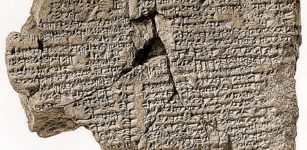 Utukku Lemnutu: Incantations Used As Therapy In Mesopotamia
Archaeology | Oct 25, 2016
Utukku Lemnutu: Incantations Used As Therapy In Mesopotamia
Archaeology | Oct 25, 2016 -
 Controversial Theory Suggests Ancient Egyptians Were Founders Of Chinese Civilization
Archaeology | Sep 5, 2016
Controversial Theory Suggests Ancient Egyptians Were Founders Of Chinese Civilization
Archaeology | Sep 5, 2016 -
 Gilgamesh And Enkidu Undertake A Dangerous Mission To Hunt Forest Giant Humbaba
Featured Stories | Jun 1, 2017
Gilgamesh And Enkidu Undertake A Dangerous Mission To Hunt Forest Giant Humbaba
Featured Stories | Jun 1, 2017 -
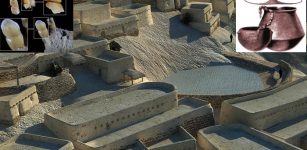 4,000 Years Ago Women Of El Argar Used Their Teeth As Tools
Archaeology | Nov 10, 2020
4,000 Years Ago Women Of El Argar Used Their Teeth As Tools
Archaeology | Nov 10, 2020 -
 Ancestral Puebloans Survived Devastating Climate Change Hiding In New Mexico Lava Tubes
Archaeology | Nov 20, 2020
Ancestral Puebloans Survived Devastating Climate Change Hiding In New Mexico Lava Tubes
Archaeology | Nov 20, 2020 -
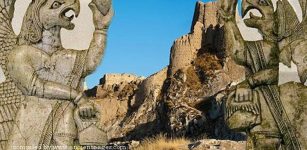 Ancient Settlement Inhabited By Urartian People – Unearthed
Archaeology | Oct 13, 2020
Ancient Settlement Inhabited By Urartian People – Unearthed
Archaeology | Oct 13, 2020 -
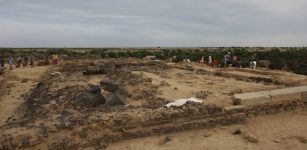 African Kingdom Of Axum – Ancient Ruins Of Early Churches Unearthed
Archaeology | Dec 9, 2022
African Kingdom Of Axum – Ancient Ruins Of Early Churches Unearthed
Archaeology | Dec 9, 2022



